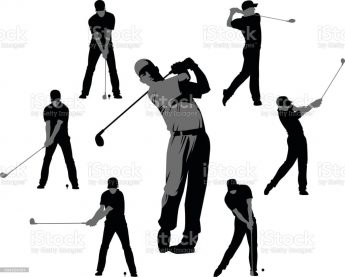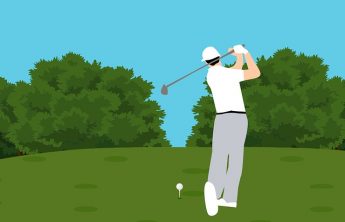Table of Contents
Introduction
Golf swing is one of the most talk-about aspects of golf playing, and this is due to its huge impact on golf. The distance and the direction of your shot depend largely on your swing. However, there seems to be a crucial factor that helps your swing. This is the wrist action. Most of us don’t notice the effect and position of the wrist hinge when making the swing. You are simply unaware of it because you cannot see the wrist up there. The movements in the wrists are tremendously important for the distance and the direction of a shot.
Most of the players that struggle with their swings, perhaps, lack the proper wrist action. When you struggle with your swing, you seem to struggle in other areas such as distance control, gripping the club, short games, and the natural position you should address.
If you practically struggle in these areas, then you could check out your wrist action. Fortunately, this article is going to show you everything pertaining to the wrist in golf.
Proper Use of the Wrists
To start with, we would like to mention the two types of wrists we will be talking about
- The Front Wrist
The front wrist is the left wrist for the right-handed player
- The Back Wrist
The back wrist is the right wrist for the right-handed player
Also, there are three types of hinge position that will be mentioned in this article;
- Cupping
This is the wrist position when it forms a cup-like shape with the back of the hand and forearm, with the bottom of the “cup” being the wrist’s crease.
- Bowed Position
The second type is the bowed position. In this position, the palm of the hand folds in towards the forearm, such that the wrist resembles a bow
- Side by Side Position
This position is assumed when the back of the wrist remains flat while the hand moves from side to side
Here is a little process that shows the position of the wrist in a swing:
When you start a swing, both wrists stay fairly flat. Taking a look at both wrists’ back (or top) seems to be a little hinge. This part of the hinge is particularly important to put you in the right position to begin the swing well.
As you start the swing, the back wrist slightly hinges, first forming a cup’s shape. Then you are in the cupping position. Here, the front wrist remains fairly flat until the hands get above waist-high. At this point, the wrist hinge is at the back wrists only.
When the hands get waist-high, the front wrist also begins to hinge in a side motion towards the target.
Let’s discuss the wrist hinge position at the top of the backswing
- Flat Left Wrist
This is the most used and accepted position. It simply refers to the front wrist at the top of the swing. It is formed when the back of the front wrist stays flats at the top of the swing. In this position, there is always a sideways movement towards the target. However, golfers maintain the flat back of the wrist
- Bowed Left Wrist
This position is usually seen in players who bow their front wrists at the back swing’s top. It might be a little bit difficult position to learn, but when you get the hang of it, it will add a little distance to your shots.
- Cupped Left Wrist
Another position is the cupped left wrist. This position requires great hand-eye coordination. It is often difficult to get to if you are just starting, but once mastered, it can increase your distance.
- The Ideal Wrist Position
We would recommend you start with the flat position first. After you have mastered this, you could move on to the next positions. However, irrespective of the position you ch
oose, one major thing you have to take note of is that the back of the front wrist and the clubface’s angle must remain relatively parallel. This will ensure you hit your shots straight, giving you more distance.
- Releasing of the Wrists
As you approach your downswing after completing your backswing, you have to maintain the angle in your wrist as long as possible. You will achieve a solid Doing this will ensure you make solid contact and squeeze the ball well.

Remember that for you to have more distance, you have to have more clubhead speed. The clubhead speed is practically dependent on the angle created by your forearm and the shaft of your golf club. So, the longer this angle, the more impact you make on the golf ball
Therefore, to get into this form, you should release your wrists directly at the ball from the top of your swing. The club should lag behind your hands, generating speed. You’ll then straighten out your wrists when they get back to waist-high. After making your impact, you should continue releasing the wrist until they contrast to the other side of your body.
Then, your back wrist will start to bow, and your front wrist will assume the cup position until they slow down and assume a finish position.
Drills for Wrist Action
Impact Bag Drill
- Set the bag down where the ball would be and hit the bag with your club
- This will stimulate the proper impact position and can show if you are releasing the club too early or late
- The clubface should hit flat against the back, and your hands should be aligned with the position of the golf ball
This drill helps to correct the mistakes associated with wrist action, such as releasing the club too early or late
Swing Club Upside-Down Drill
- Turn your club upside down by gripping near the head rather than the grip
- Swing the club
- Listen for a whooshing sound as you swing the club down
- You should be able to detect the general area where the noise is emanating from
The whooshing noise allows you to know where you are releasing your wrists and clubhead. If you release your wrists too early, the noise is behind you, and vice versa if you are releasing too late.
Conclusion
Now that you know about wrist action in golf swing. It is vital you master your wrist action so that you can hit the ball farther and straighter into the middle of the fairway.
We hope you have found the best information and we are sure that if you can use the information in this guide, you will improve your game. Thanks for reading!


